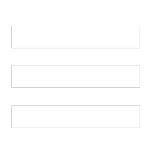Blue Chip introduces Automated mattress functions that directly address a leading cause of skin breakdown.
Sinking into an Alternating Pressure Mattress is a common and overlooked problem that can lead to the development of wounds that must be addressed at the root cause.
For those with limited mobility, repositioning is essential to help prevent skin breakdown. A hospital bed frame that allows the patient to change the position of their head and feet can assist. However, raising and lowering the head of the bed into a Fowler Position can also increase a person’s risk of skin breakdown.
Bed Position
If a bed is in the supine position, a person’s weight is distributed across the entire surface of the body. However, when the head of the bed is inclined into a Fowler position, body weight shifts from being supported over the entire body surface to concentrated weight straight down on the patient’s bottom. This causes the patient to SINK into their mattress.
Sinking into a mattress is a leading cause of skin breakdown.
Sinking into a mattress causes the patient to ingress deeper into the mattress. As the patient sinks, they slide, and as they slide they are at a much higher risk of skin shear. This skin shear is often seen in the coccyx or sacral area. As bed position is changed by the caregiver and patient throughout the day, the shearing forces are continual. This creates an environment for non-healing wounds and if not corrected, promotes recurrence.
Blue Chip’s Automated Fowler Function helps Hospitals and nursing staff prevent skin shear in their patients.
Blue Chip Medical’s Adapt Pro Elite™ with enhanced low air loss features an Automatic 2-Stage Fowler Function. Blue Chip’s unique therapeutic function measures the degree of incline at the head of the bed and automatically adjusts pressures in the Sacral bladders to prevent patients from sinking, sliding, and shearing.
Adapt Pro™ Elite – Alternating Pressure, Enhanced Low Air Loss Mattress System with Automatic 2-Stage Fowler Function offers advanced and automated wound care technologies that improve patient care for the treatment and prevention of stages I-IV pressure and shearing injuries.
Hospitals and long-term care facilities report improvement in skin health, positive outcomes and patient comfort as the automated features reduce the workload on nursing staff.
The unique automated features of Blue Chip’s Adapt Pro Elite™ mattress system help prevent a leading cause of skin breakdown and treat coccyx and sacral wounds.
For more information on Blue Chip’s Adapt Pro Elite or other advanced wound care systems call (800) 795-6115 or visit us on the web at www.bluechipmedical.com
LINK: https://www.bluechipmedical.com/mattress-systems/air-mattress/adapt-pro-elite/


 MENU
MENU







